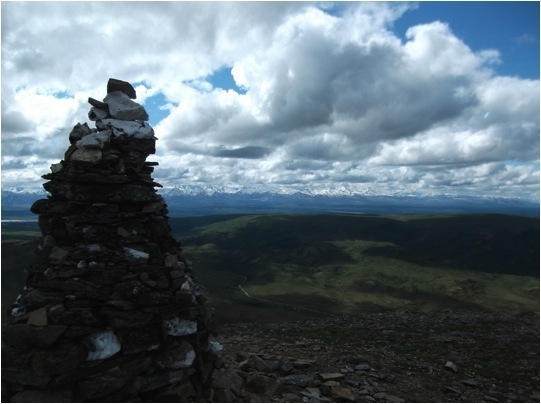One of the most frequent questions we receive to our office goes something like this “I’m planning on coming to Denali June 24th for a week….what will the weather be like?” I think most people assume we’ll give an answer along the lines of “It tends to be dry and sunny in June, but then rainy in July and cooler in August.” Rather, our explanation tends to launch into a several minute discussion on the unpredictability of mountain weather, seasons, rain gear, and the importance of dressing in layers. This can all be wrapped into one short phrase: “Expect anything.”
In my decade of working in the park we have seen the mountain for two consecutive weeks straight of bluebird skies, or it’s been hidden for nine straight days behind a solid layer of clouds. We’ve built snowmen on the lawn at Camp Denali on July 4th and felt the need to take a plunge into Moose Creek to cool down in late September. We’ve hiked in the hail at 35° F to then find ourselves half an hour later basking in the sunshine while drying out our raingear.
A “typical” Denali day will have some rain, some clouds, some sun. We are literally thirty miles away from the base of the highest mountain in North America, and weather can change on a dime. Though our mean annual precipitation is 13-20” (the same as Tucson, AZ), most of that moisture falls in the form of rain June through September. Of those months, it’s a shot in the dark when we might get the “most” rain or sun.
Your safest bet is to pack expecting any conditions. Long sleeve, loose fitting, non-cotton clothing is best for protection against the bugs and brush as we hike, and bringing warm layers (including a warm ski hat and pair of gloves!) is also essential. It never hurts to have a non-cotton t-shirt and pair of shorts in bag as well, in case the thermometer climbs! Of course, the most essential items are good hiking boots and rain gear. Hiking boots protect your feet and offer good traction, while rain gear will keep you warm and (relatively!) dry in even the strongest of downpours or if we end up hiking in a bit of snow.
As Wally Cole states it “There’s no poor weather, only poor clothing.”
The changing weather patterns offer a chance to experience the land here like no other place on earth. Our broad viewscapes looking over the tundra and taiga allow us to watch the clouds rolling in and out and the light patterns falling on the hillsides. Sometimes the mountains are bathed in alpenglow in the wee hours of the mornings; sometimes the raindrops hang from the blueberry bushes in seemingly suspended animation. This summer we’ve been hiking in snow patches in early June and sweating our way up hillsides in 80°F temps for much of later June and July. Although we’ve also had a near solid-week of rain and evening thunderstorms!
We can, however, predict the annual change of the amount of daylight we have (from the June 21st solstice with near 24 hours of daylight!) and hence the seasons. June brings wildflowers and the birth of young animals in the park, July is the peak of summer when vegetation is at it’s most lush, and as we roll into August and September we see berries ripening and fall colors coming to the tundra. You will always experience the wonder and joy of being up close to nature in Denali, a thrilling and ever changing environment.




